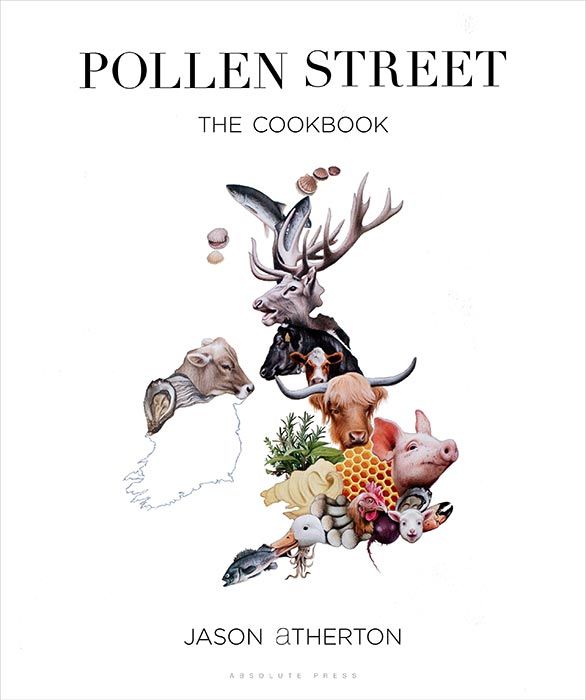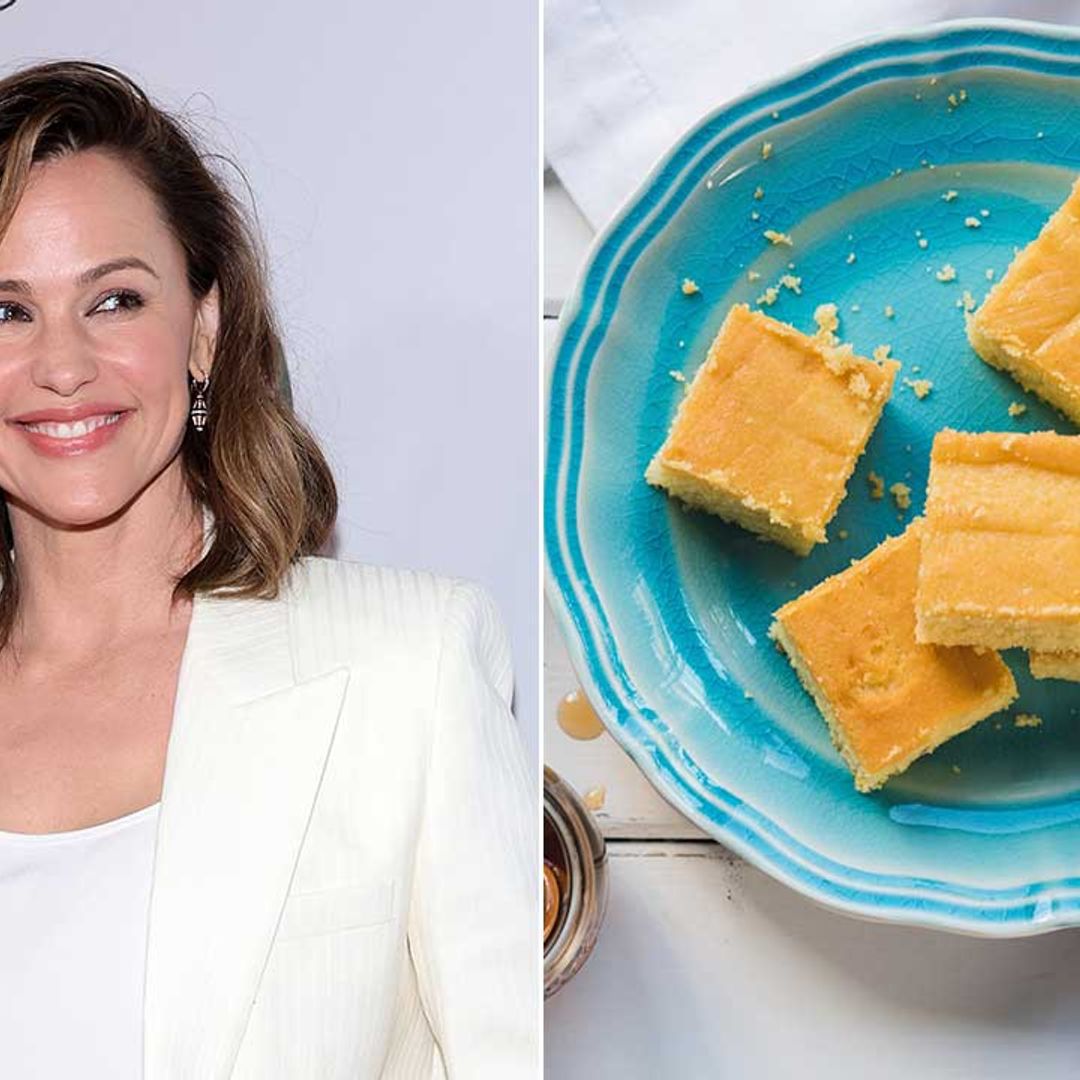Jason Atherton, the award-winning chef behind the acclaimed Pollen Steet Social, has shared his recipe for roast Orkney scallops exclusively with HELLO!. See more recipes from the chef's book, Pollen Street: The Cookbook, here, and pick up a copy of HELLO! magazine to discover the secret to his successful career and his plans for the future.
Serves 4
INGREDIENTS
For the lamb loin & fillet
- 2 boned short saddles of lamb, about 475g/17oz each (loins and fillets separated)
- Maldon sea salt and freshly ground black pepper
- Meat glue, for dusting
- Olive oil, for cooking
- Sprigs of fresh rosemary
- Unsalted butter, for cooking
For the lamb hotpot
- 100g/4oz sel gris (grey sea salt)
- A few fresh sprigs of thyme, leaves picked
- 1 large clove garlic, peeled
- 4 tsp grated lemon zest
- 1 boned shoulder of lamb, about 2kg/4 1/2lb
- Olive oil, for cooking
- 200g/7oz lamb fat
- 4 large carrots
- 4 turnips
- 500g/1lb 2oz baby silverskin onions, peeled
- 1ltr/1 3/4pt lamb sauce (see below)
- 2 large Desirée potatoes
- 125g/4 1/2oz clarified butter, melted
For the beetroot-stained cabbage
- 1 Hispi cabbage
- 1 x 250ml bottle beetroot juice (we use Beet It)
For the beetroot & blackcurrant puree
- 7 purple beetroots
- 250g/9oz blackcurrants
- 150ml/1/4pt red wine
- 150ml/1/4pt port
- 50ml/2fl oz raspberry vinegar
For the purple carrots
- 2 bunches of baby purple carrots, trimmed
- A few knobs of unsalted butter
To serve
- A handful of baby bull’s blood leaves, with stems on
- Vinaigrette
- Mint sauce
MORE: Try Jason Atherton's roast Orkney scallops recipe
METHOD
1. Trim off any sinews from the fillets, then set aside in the fridge. Carefully cut off the fat covering the loins so that the fat remains as whole pieces. Lay out the fat on a chopping board and bang the pieces with a rolling pin to flatten them out. Arrange the pieces of fat side by side on a large sheet of clingfilm to make a rectangle large enough to wrap around the loins. Rub the loins with a little salt. Sprinkle a little meat glue on the rectangle of fat, then place the loins along one side. Holding the ends of the clingfilm, roll up to wrap the fat around the loins and form a neat log. Unwrap the clingfilm and then tie the loin ballotine with butcher’s string.
2. Put the loin ballotine into a large vacuum bag and vacuum-seal it. Set the bag on a steaming tray and place in a steam oven to cook for 5 minutes. Remove and immediately immerse the vacuum bag in a bowl or tray of iced water to stop the cooking process. Keep in the fridge until needed.
3. When ready to finish the loins for serving, preheat the oven to 200°C, 400°F, Gas 6. Heat a little olive oil in an ovenproof frying or sauté pan and sear the loin ballotine for 2 minutes on each side, or until evenly browned. Add some rosemary to the pan, then transfer to the oven and roast for a couple of minutes for medium rare. Leave to rest for a few minutes before serving.
4. To cook the lamb fillets for serving, heat a little oil in a wide frying pan. Season the fillets with a little salt and freshly ground black pepper, then add them to the pan with some rosemary and butter. Sear for about 2 minutes on each side or until evenly golden brown. As they cook, spoon the foaming butter over them to keep them moist and encourage even cooking. When ready, remove them from the heat and leave to rest for a few minutes.
5. For the lamb hotpot, start by making a salt cure. Put the salt, thyme leaves, peeled garlic clove and lemon zest in a small food processor and blitz together. Tip half the mixture on to a baking tray. Place the shoulder of lamb on the tray and sprinkle the remaining salt cure over the top. Rub the cure all over the lamb with your hands. Cover the tray with clingfilm and set aside in the fridge to cure for 4 hours.
6. Rinse off the salt cure from the lamb shoulder and pat it dry with kitchen paper. Heat a little olive oil in a large pan over a medium-high heat and sear the lamb shoulder for about 2 minutes on each side or until evenly golden brown. Remove to a tray and leave to cool. Once cooled, put the lamb shoulder into a vacuum bag and add the lamb fat. Vacuum-seal the bag, then gently cook the lamb in a sous vide machine (or water bath) heated to 84°C for 8-10 hours. When ready, the lamb should be soft and tender. Remove from the sous vide and leave to cool completely in the bag to prevent the lamb from drying out.
7. Meanwhile, peel the carrots and turnips and chop into roughly 2cm/3/4in dice. Heat a little olive oil in a large heavy-based pan over a medium-high heat. Add the carrots, turnips and onions with a little seasoning and fry the vegetables, stirring occasionally, for 8-10 minutes or until tender and golden brown.
8. Roughly chop the lamb shoulder into 2cm/3/4in dice. Add to the pan along with the lamb sauce and season well to taste. As soon as the mixture is heated through, remove the pan from the heat. Spoon the lamb mixture into 4-6 individual ovenproof serving pots.
9. Peel the potatoes and thinly slice them on a mandoline. Pile the slices into short stacks and stamp out neat discs with a 3cm/1 1/4in round pastry cutter. Working quickly, before they discolour, arrange the potato discs, overlapping, on top of the lamb mixture in each individual pot. Brush the potatoes generously with clarified butter and season well with sea salt.
10. When ready to serve, preheat the oven to 160°C, 325°F, Gas 3. Place the pots on a baking sheet and bake for 15 minutes, turning the pots every 5 minutes to ensure that the potatoes colour evenly. The lamb hotpots are done when the potatoes are golden brown and tender when pierced with a skewer or the tip of a knife.
11. For the beetroot-stained cabbage, trim off the base of the cabbage and separate the leaves. Trim the hard stalk from each leaf and then place the leaves in a saucepan. Pour over the beetroot juice and bring to a simmer. Partially cover the saucepan with a lid and simmer for 4-5 minutes or until the cabbage leaves are tender and stained purple colour. Leave to cool completely in the juice.
12. For the beetroot and blackcurrant purée, peel and coarsely grate the beetroots, then place in a saucepan with all the other ingredients. Bring to a vigorous boil and cook, stirring the mixture every once in a while, until the beetroot is soft and the mixture has reduced to the consistency of jam. Transfer the contents of the saucepan to a blender and blitz until smooth. Season to taste. Pass the purée through a fine sieve into a clean saucepan, ready to reheat for serving.
13. Blanch the baby purple carrots in a saucepan of boiling salted water for about 3 minutes or until they are tender when pierced with the tip of a knife. Use tongs or a slotted spoon to transfer the carrots to a bowl of iced water to cool them quickly and preserve their colour. When you are about ready to serve, lightly season the carrots, then reheat them in a saucepan of foaming butter for a couple of minutes, tossing occasionally, until warmed through.
14. To serve, slice the lamb loin ballotine thickly and place 2 slices on each serving plate. Cut the lamb fillets into individual portions and wrap each portion in 1-2 beetroot-stained cabbage leaves. Add this to each plate followed by a neat spoonful of beetroot and blackcurrant purée and a couple of purple carrots. Dress the baby bull’s blood leaves with a little vinaigrette and garnish the plate with a few leaves. Bring the dish to the table with an individual lamb hotpot and a small serving jug of mint sauce on the side.
LAMB SAUCE
Makes about 1ltr/1 3/4pt
INGREDIENTS
- Olive oil, for cooking
- 1kg/ 2 1/4lb lamb rib bones, chopped into smaller pieces
- 1 onion, peeled and roughly chopped
- ½ leek, roughly chopped
- 1 carrot, peeled and roughly chopped
- 1 celery stick, roughly chopped
- ½ bulb garlic, cloves separated, peeled and roughly chopped
- ½ tbsp tomato paste
- 200ml/7fl oz dry white wine
- 500ml/18fl/oz reduced veal stock
- 500ml/18fl oz chicken stock
- Maldon sea salt and freshly ground black pepper
- A sprig of fresh lemon thyme
- A sprig of fresh rosemary
- Pared zest of 1 lemon
- 1 dried kombu leaf
METHOD
1. Heat a drizzle of olive oil in a large, heavy-based pan, add the lamb bones and fry over a high heat until evenly browned. Remove the bones to a plate and set aside.
2. Add a little more oil to the pan and tip in the chopped vegetables and garlic. Fry for about 8 minutes, stirring frequently, until the vegetables begin to soften. Add the tomato paste and stir well. Fry for another couple of minutes until the vegetables begin to brown, then deglaze with the wine, scraping the sides and bottom of the pan. Let the wine bubble and reduce by half.
3. Return the browned bones to the pan. Pour in the veal and chicken stocks, topping up with a little water if the bones are not immersed in the liquid. Bring to the boil, then simmer for about 4 hours, skimming off any scum and froth from the surface.
4. Strain the sauce through a fine sieve into a clean heavy-based saucepan; discard the solids.
5. Taste the sauce. If you want a stronger flavour, boil to reduce and intensify. Take the saucepan off the heat. Season to taste with salt and freshly ground black pepper and add the lemon thyme, rosemary, lemon zest and kombu. Leave to infuse and cool.
6. Once cooled, strain the sauce once more. Reheat before serving.
Our recipes are taken from Pollen Street by Jason Atherton (Absolute Press, £50), published on 15th November, with photography © John Carey. Celebrating his iconic, award-winning London restaurant, the collection is a compilation of 80 of Jason’s favourite Pollen Street Social recipes – a must-have cookbook for serious chefs and aspiring home cooks alike.








